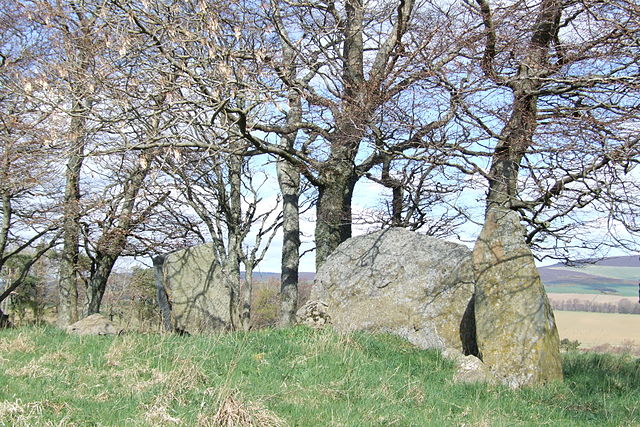A stone circle is a ring of standing stones. Most are found in Northwestern Europe – especially in Britain, Ireland, and Brittany – and typically date from the Late Neolithic and Early Bronze Age, with most being built from 3000 BC. The best known examples include those at the henge monument at Avebury, the Rollright Stones, and elements within the ring of standing stones at Stonehenge. Scattered examples exist from other parts of Europe. Later, during the Iron Age, stone circles were built in southern Scandinavia.
Swinside stone circle, Cumbria, England
Bryn Cader Faner, North Wales
Easter Aquhorthies recumbent stone circle near Inverurie, Aberdeenshire, Scotland
Dunnideer recumbent stone circle near Insch, Aberdeenshire, Scotland
A menhir, standing stone, orthostat, or lith is a large upright stone, emplaced in the ground by humans, typically dating from the European middle Bronze Age. They can be found individually as monoliths, or as part of a group of similar stones. Menhirs' size can vary considerably, but they often taper toward the top.
Large menhir located between Millstreet and Ballinagree, County Cork, Ireland
Cwm Rhaeadr Fawr maen hir (menhir) near Aber Falls, Gwynedd, Wales
Dry Tree menhir – a standing stone at Goonhilly Downs Cornwall
The Géant du Manio, a menhir in Carnac, Brittany








